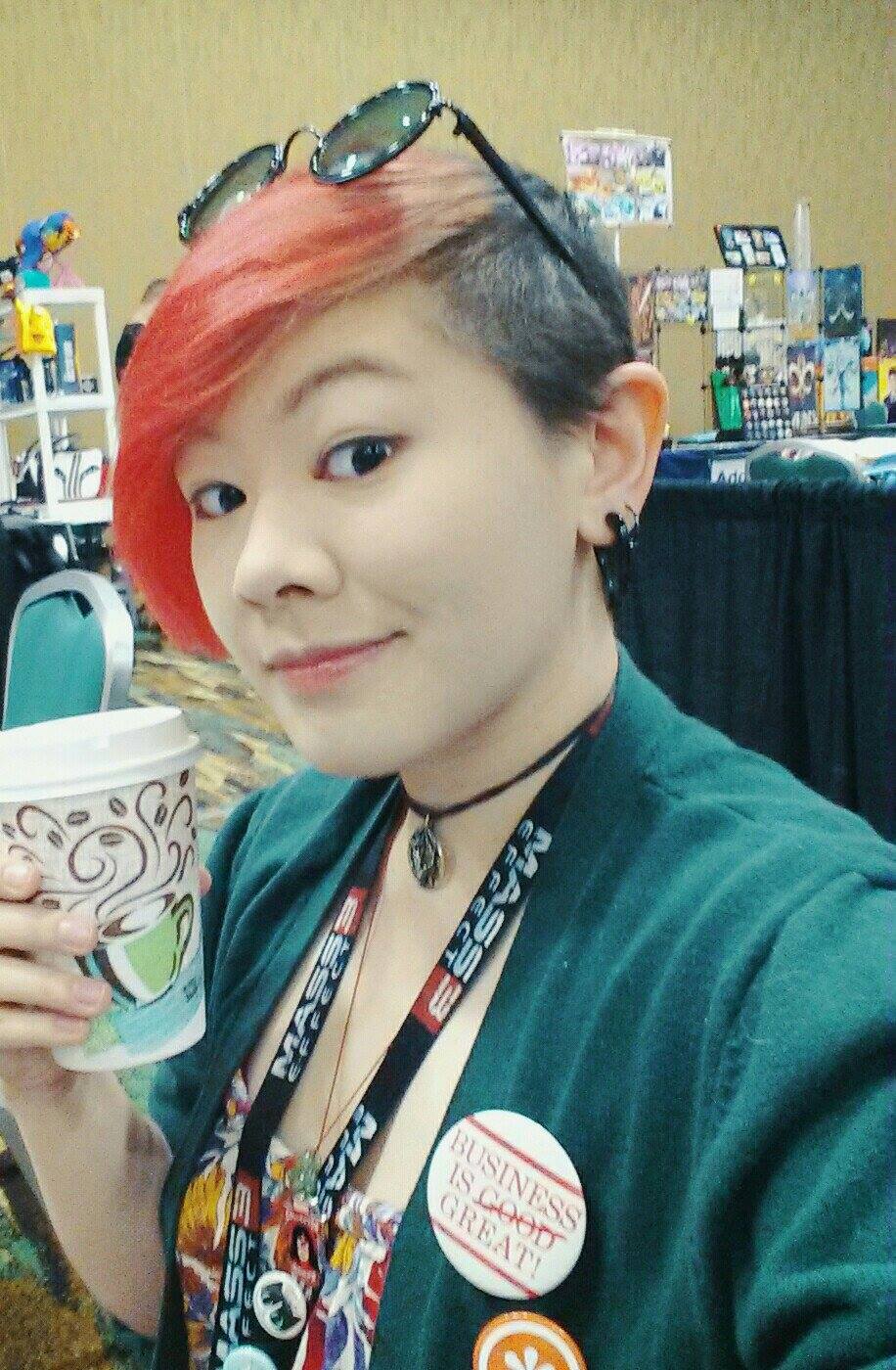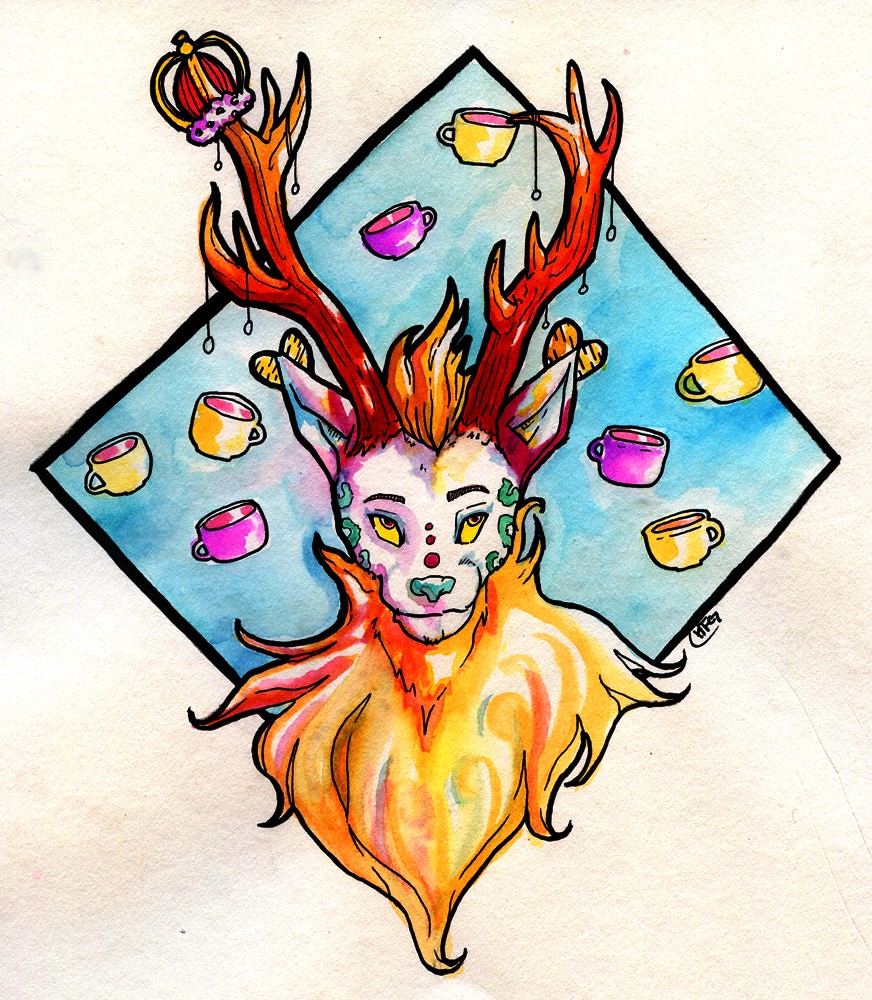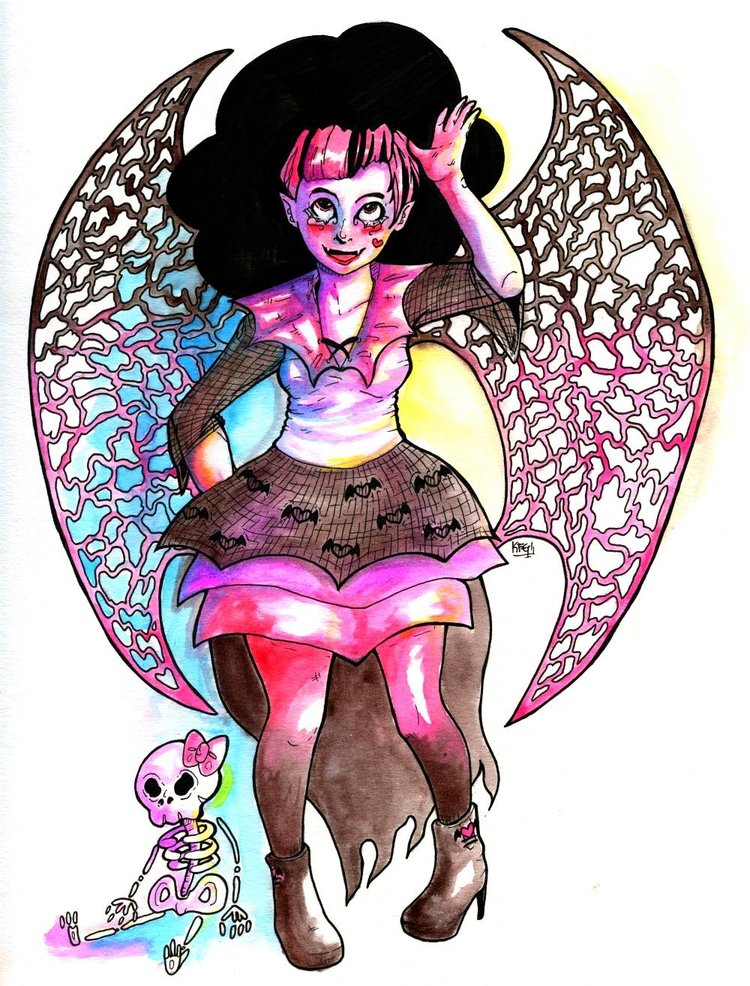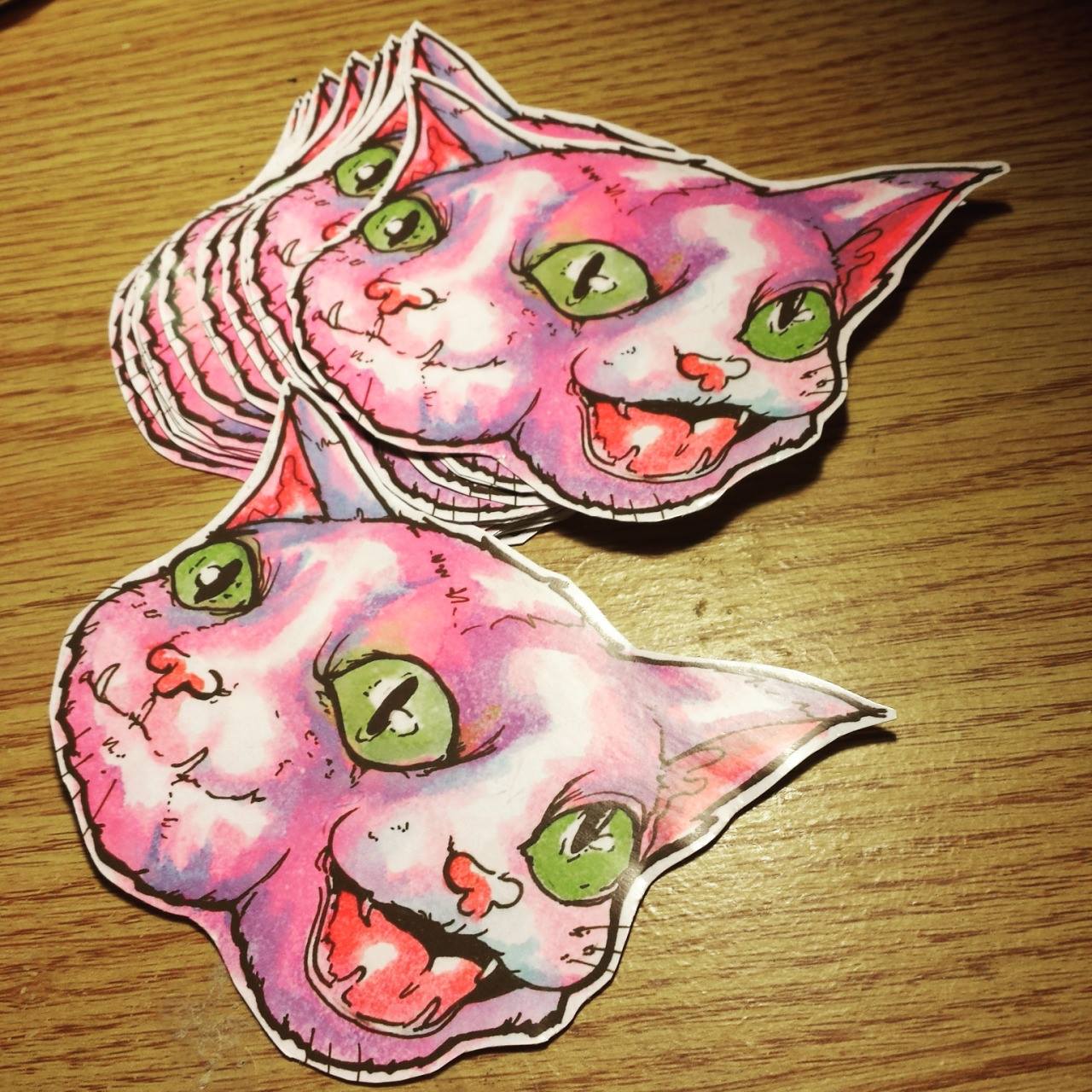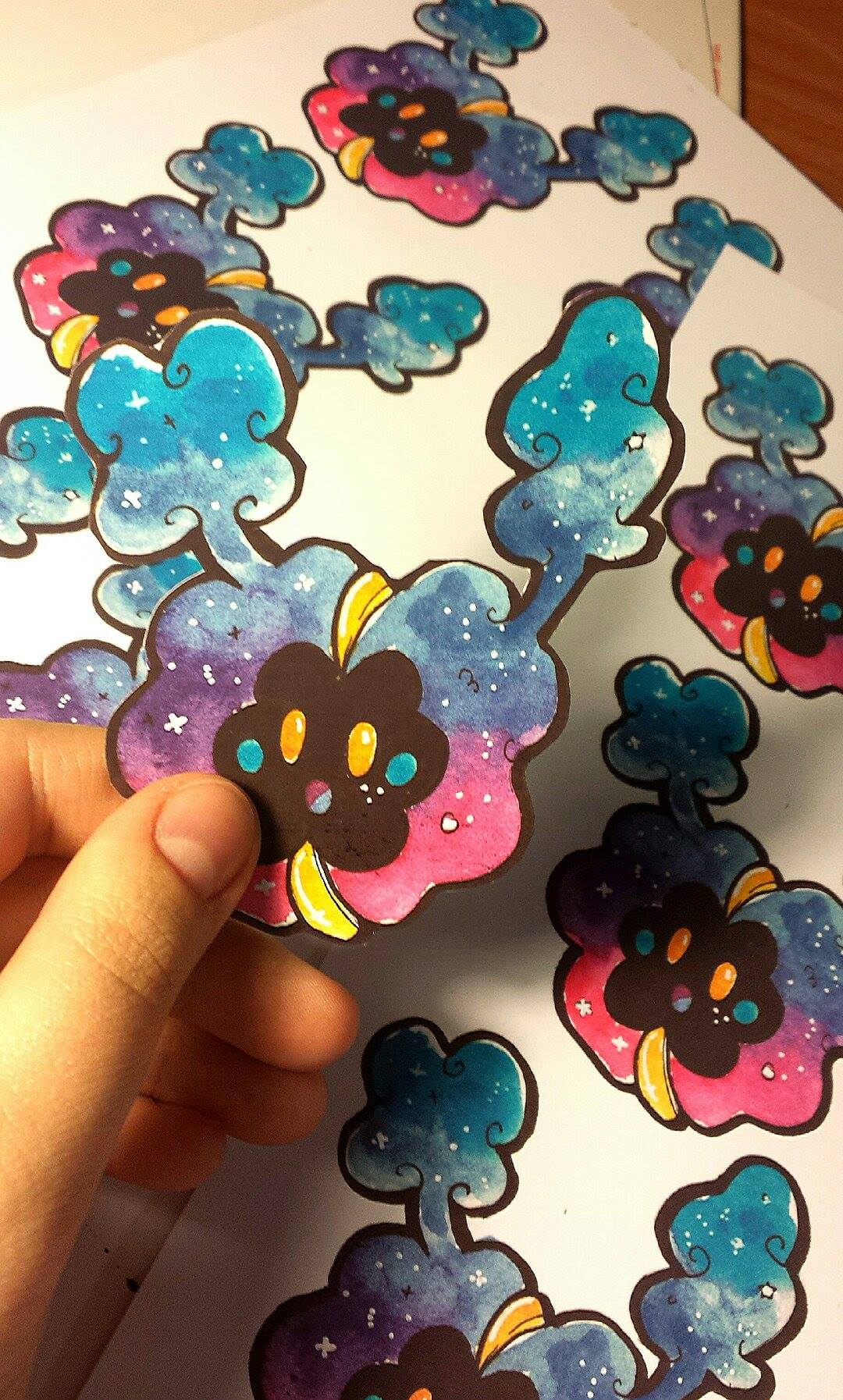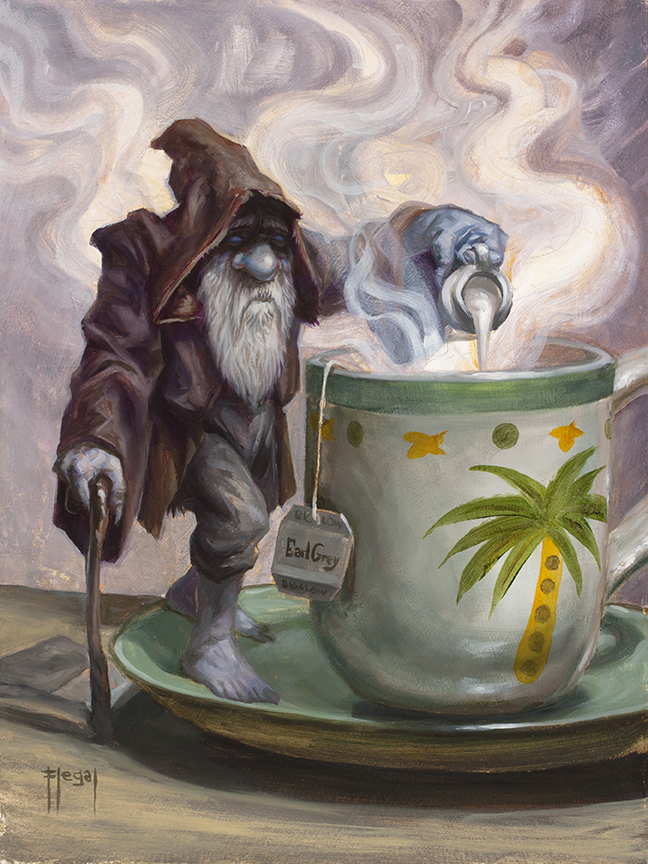Every once in awhile, I'll be roaming the digiscape, and a ludicrously good tid-bit of advice will show up. An artist that I'd only just met on Twitter managed to give some of the best advice I'd seen in some time to artists, newbies especially. I thought this was worth a good share, because I couldn't have said it any better myself...
I'm going to riff a bit here, because even though I'm new to trying to make a living as a creative, I've been around a bit, and I have a few things that I think may help, if you take the time to read through this. We're all aware that it's tough to make a living as a creative professional. Frankly, the issue is that peoples' tastes are fickle. When you go it alone, there is a very real chance that you may work 30 years learning your craft for a single year of popularity and high demand.
That is not a good investment. You can try to justify it by hoping that in that single year, you'll make some really big sales, but that's about as likely as winning the lottery - it can happen, but the reality is, it probably won't. We do what we do because we love it, but that is not a reason to endure abuse or scorn from other parts of society. Art is a skilled trade that takes a long time to learn, and often requires expensive equipment and personal risk.
It may be fine to get $5 for an avatar when you're 15, but what do you expect to do when you're 30 and paying a mortgage? There's a very big distinction between pricing your work accordingly, and knowing what your audience demand is. Here's an article from muddy colors that might help to sum up this issue in a much more concise way: http://www.muddycolors.com/2015/09/pricing/
2. Don't unfollow people.
It takes a little time for people to get around to following back, stop being spastic about it. Instead, take some time to maybe get to know them. Ask them questions, INTERACT. I think that quite a few people forget that the point of social media is to be, well, social.
Now, this is not to say that you need to maintain your social outreach in the exact same way all of the time - like I can find unfollowing okay if they are either being offensive to you personally OR not interacting in any way for quite an extended amount of time.
3. Take your gender out of your bio.
Now, this is not to say that you need to maintain your social outreach in the exact same way all of the time - like I can find unfollowing okay if they are either being offensive to you personally OR not interacting in any way for quite an extended amount of time.
3. Take your gender out of your bio.
Frankly, you just have better uses for that space. Put a link to another account or something in there instead. Some social medias require this space to be used, but I have to agree that I find it a bit useless. I don't see what the difference is, ultimately.
4. Never go full hippie.
Sorry, it's gotta be said - don't swap wives or join communes. Treat other artists like coworkers. This one is a bit difficult to get over for some people, keeping things professional, but I highly suggest that you treat every interaction as though this is someone that you could potentially work for. That's not to say that you can't be goofy, or have fun about things, but try to maintain some semblance of professionalism, especially if the situation warrants you to be.
5. When you have a bad day, get it out, but then get over it.
5. When you have a bad day, get it out, but then get over it.
My own little sister is also a painter, and she's not bad, but she's so constantly negative, I can barely stand spending time with her - and that's not a great way to convince people to support you.
6. Organize yourselves.
6. Organize yourselves.
Don't stand alone - find the people near you who are like-minded, and work with them. If you're a musician, you need album covers, posters, bartenders, bouncers, roadies, etc. If you're a painter, why not serve food and hire a quartet for a show? If you're an illustrator, join a creative group. There are TONS of them. No matter what you join up with, inspiration will ooze from your co-members if it's an active group. Check Facebook, check twitter, check blogs, really check wherever you regular to see if there are any available.
If you want to go the physical route, I suggest - especially as a creative - to search out locally what kinds of groups there happen to be local to you. As a painter, you might benefit from doing plein air groups. As an illustrator, you might have a local comics guild to try your hand at that type of creative outlet. The point is to just start trying to join up with fellow, like-minded folks and constantly push each other!
7. Ask. Just ask.
If you want to go the physical route, I suggest - especially as a creative - to search out locally what kinds of groups there happen to be local to you. As a painter, you might benefit from doing plein air groups. As an illustrator, you might have a local comics guild to try your hand at that type of creative outlet. The point is to just start trying to join up with fellow, like-minded folks and constantly push each other!
7. Ask. Just ask.
Stop being so scared of your own shadow, and tell people what you need. Not everyone will like that - that's fine, those people will go away. This isn't even an art thing - it's true everywhere. No one ever asks for things, they just assume and give up.
I've never been ashamed to ask anyone about anything myself, even to the point of getting myself in trouble because I have no filter. But that's simply to say, if you're uncertain... ask! Typically if someone is receptive enough to respond to your question, if they don't know, chances are someone they might know has the answer to your question. This is what I believe the true meaning of social media is - people helping each other figure out things that they might not know.
8. Keep personal beef personal.
I've never been ashamed to ask anyone about anything myself, even to the point of getting myself in trouble because I have no filter. But that's simply to say, if you're uncertain... ask! Typically if someone is receptive enough to respond to your question, if they don't know, chances are someone they might know has the answer to your question. This is what I believe the true meaning of social media is - people helping each other figure out things that they might not know.
8. Keep personal beef personal.
You're not going to get along with everyone, that's impossible- but you can decide not to scream about how awful they are from every rooftop. I haven't seen it in visual arts yet, but look at the dumpster fire that is YouTube, if needed.
I get it, I really, really do - you see something you like, and you want to emulate it - and that's a good way to learn. And I don't know, maybe it's just me, but it doesn't seem likely that every artist dreams of someday working in an anime mill. The main point here is that everyone is simply an emulation or combination of things that came previous. Take even what we assume to be the great masters, they are emulating even older artists. Everything in the art world APPEARS to be cyclical, so I'd suggest find things that you enjoy, subject matter that really speaks to you, hell, even find artists that are similar to what you are trying to achieve, and simply learn everything you can from them until you have your own voice.
10. Finish your work.
10. Finish your work.
The longer you look at an unfinished work, the more you grow to dislike it. Don't let that happen - my best work is finished in one sitting, because my mind doesn't have time to second-guess it. If you finish something and it sucks, just move on.
While I can't agree with the part about finishing a project in one sitting, because mine tend to take multiple sittings over weeks-on-end, I can highly recommend that you work on multiple pieces at a time and only work in small spurts on each project. This way it keeps you fresh on each piece.
For example, I think at any given moment I'm working on about three to ten individual pieces. It helps to vary subject matter, vary size, vary composition, etc. That way each piece feels unique in it's own way.
Either way, at the end of the day, whether you like or hate a piece, ultimately, is of small concern. In my experience, the pieces that I've absolutely loved, didn't have much impact on any audience, and the opposite of course held true in different situations. The main thing is - make work, and then finish it to work on more work. Keep moving forward, and don't dwell on what you did in the past.
If nothing else sticks, just remember that with each piece you work on, it'll always be a little bit better than the last.
11. Work with others.
While I can't agree with the part about finishing a project in one sitting, because mine tend to take multiple sittings over weeks-on-end, I can highly recommend that you work on multiple pieces at a time and only work in small spurts on each project. This way it keeps you fresh on each piece.
For example, I think at any given moment I'm working on about three to ten individual pieces. It helps to vary subject matter, vary size, vary composition, etc. That way each piece feels unique in it's own way.
Either way, at the end of the day, whether you like or hate a piece, ultimately, is of small concern. In my experience, the pieces that I've absolutely loved, didn't have much impact on any audience, and the opposite of course held true in different situations. The main thing is - make work, and then finish it to work on more work. Keep moving forward, and don't dwell on what you did in the past.
If nothing else sticks, just remember that with each piece you work on, it'll always be a little bit better than the last.
11. Work with others.
One person alone has to fight the world, but many hands make light work. Be the person that volunteers, and shows up. One day, you're going to want to retire - give people a reason to come visit you when you're old.
12. Form trade guilds.
12. Form trade guilds.
I'm gonna catch hell for that, but especially in the US, it's really the only option we have to ever get decent healthcare or retirement packages.
In the good 'ole U.S.of A. this unfortunately isn't a thing - GOD I WISH IT WAS. But I can commend this ten-fold. Artists need all of the things mentioned too!
13. When someone cries for help, answer.
In the good 'ole U.S.of A. this unfortunately isn't a thing - GOD I WISH IT WAS. But I can commend this ten-fold. Artists need all of the things mentioned too!
13. When someone cries for help, answer.
Don't make me smack the dumb outta ya - if you're a creative, you know exactly what those times are like. Lend a hand, so that when it's inevitably you later on, others will return the favor.
Much like the statement up above about communication - it's important to lend a hand as often as you can. And this can be something as simple as just telling someone that seems like they're having a bad day, that you believe in them. If absolutely nothing else, find something that they said somewhere via social media, and just comment or share it. That way they know that their words are being appreciated.
14. Stop believing dumb things.
Much like the statement up above about communication - it's important to lend a hand as often as you can. And this can be something as simple as just telling someone that seems like they're having a bad day, that you believe in them. If absolutely nothing else, find something that they said somewhere via social media, and just comment or share it. That way they know that their words are being appreciated.
14. Stop believing dumb things.
I don't know how much more plainly I can put it. If someone tells you "Armageddon is upon us!" but it just looks like any other day from your window, it probably isn't. You can't create truth if you live in a delusion.
And who am I to be saying these things? Well, that's easy - I'm the guy that took the time to write something down. If you don't think that's authoritative enough in and of itself, you clearly have not been paying attention. If you disagree, you can do that same thing.
And who am I to be saying these things? Well, that's easy - I'm the guy that took the time to write something down. If you don't think that's authoritative enough in and of itself, you clearly have not been paying attention. If you disagree, you can do that same thing.
--------------------------------------------
Thanks Twitsareangry for this awesome post!
If you enjoyed reading, please give it a SHARE via Facebook or Twitter, below.
If you enjoyed reading, please give it a SHARE via Facebook or Twitter, below.
You can find view more of Twitsareangry work at:
----------------------------------
THANKS FOR READING, AND UNTIL NEXT TIME!






















